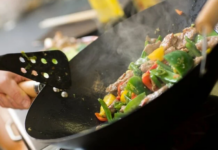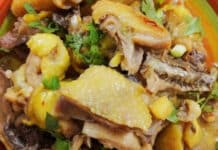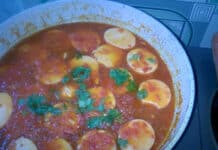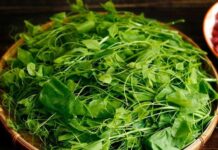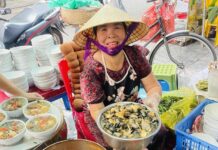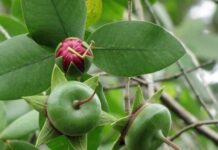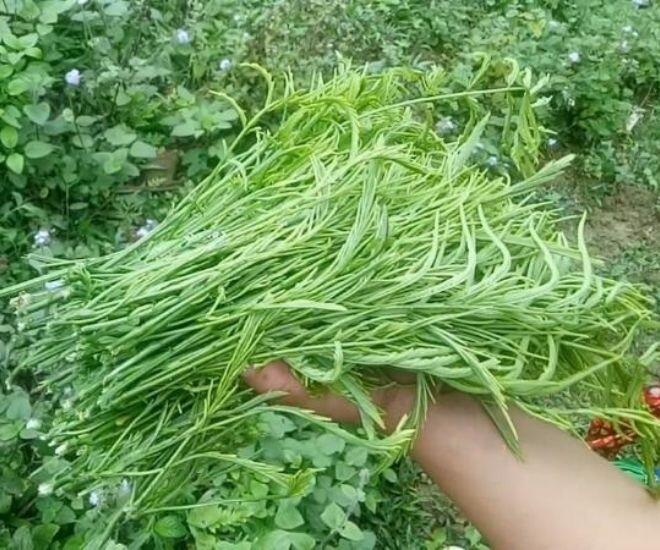
In the Thai ethnic language, “rau thối” is known as pắc nam. This wild vine grows in the forests, characterized by its long, thorny stems and dark green, symmetrical leaves. The tender young shoots are the most prized part, used in cooking or as herbal medicine. Harvesting requires caution due to the sharp thorns.
Rau thối thrives from March to June, when the Northwest forests are lush and humid. It’s most abundant in Sơn La, Điện Biên, Lai Châu, and Yên Bái. During this season, fresh rau thối appears in highland markets and is transported to cities like Hanoi, where it’s featured in Northwest specialty restaurants. Prices in Hanoi can reach hundreds of thousands of dong per kilogram, while locals sell it for just tens of thousands.
The Aroma of Mountain Forest Greens
Its name, “rau thối” (stinky greens), comes from its strong odor, which can be off-putting to first-timers. However, many find the scent merely unusual rather than foul. The smell mellows after harvesting, and locals prefer it fresh for its bold flavor.
When cooked, rau thối transforms into a fragrant, crisp, and sweet delicacy. This contrast between its raw scent and cooked taste makes it unique. Many visitors, initially hesitant, grow to love it, even buying it as a souvenir.
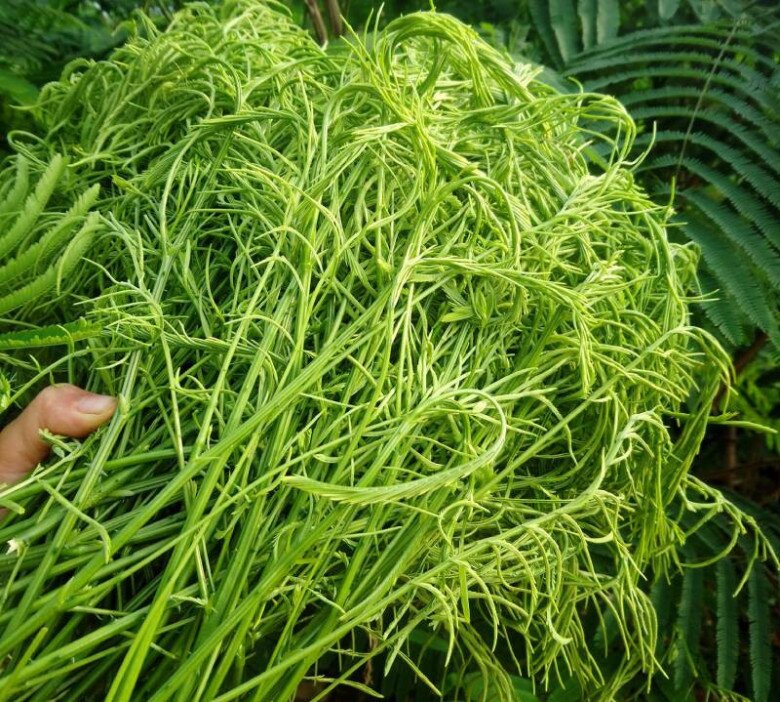
Beyond its culinary use, rau thối is a valued herbal remedy. In the Northwest, it’s consumed to cool the body in summer and treat joint pain. Dried rau thối is used in traditional medicine for liver, kidney, and stomach ailments, as well as acid reflux and mouth bitterness. Its health benefits make it a sought-after specialty.
Delicious Dishes Featuring Rau Thối
Northwest cuisine blends forest ingredients with ethnic culinary techniques, and rau thối is no exception. It stars in several unique, nutritious dishes.
Rau Thối Salad with Wild Eggplant and Dried Pork: A highland restaurant favorite. Blanched rau thối is mixed with wild eggplant and shredded dried pork, dressed with fish sauce, lime, chili, and peanuts for a refreshing, tangy flavor.
Pork Tail Soup with Rau Thối: A nourishing family dish. Tender pork tail is simmered with rau thối, creating a sweet broth that highlights the greens’ unique taste.
Rau Thối Stir-Fried with Bamboo Shoots: A simple yet authentic dish. Crisp bamboo shoots and rau thối combine for a light, cooling summer meal.
Grilled Stuffed Fish with Rau Thối: A festival specialty. Freshwater fish like carp or trout are stuffed with rau thối and spices, then grilled over charcoal for a memorable smoky flavor.
Rau Thối Patties: A modern twist. Minced rau thối and pork are seasoned, shaped into patties, and fried until crispy. Served with rich fish sauce, it’s a hit among young foodies.
Rau Thối Egg Drop Soup: Similar to tomato egg soup but with rau thối, offering a bolder flavor for adventurous palates.
Rau thối can also be simply boiled and dipped in fish sauce or stir-fried with beef or pork. Each preparation showcases its versatility and cultural significance.

For travelers, rau thối is a unique regional souvenir. Though less common than tea or plums, its distinctiveness makes it special. Many buy fresh or dried rau thối as a practical, memorable gift. Despite high city prices, its flavor and health benefits make it worthwhile.
Today, rau thối has moved beyond highland homes to city restaurants, featuring on tourist menus. It’s one of the Northwest’s most distinctive specialties, offering a curious blend of aroma, flavor, and cultural depth.
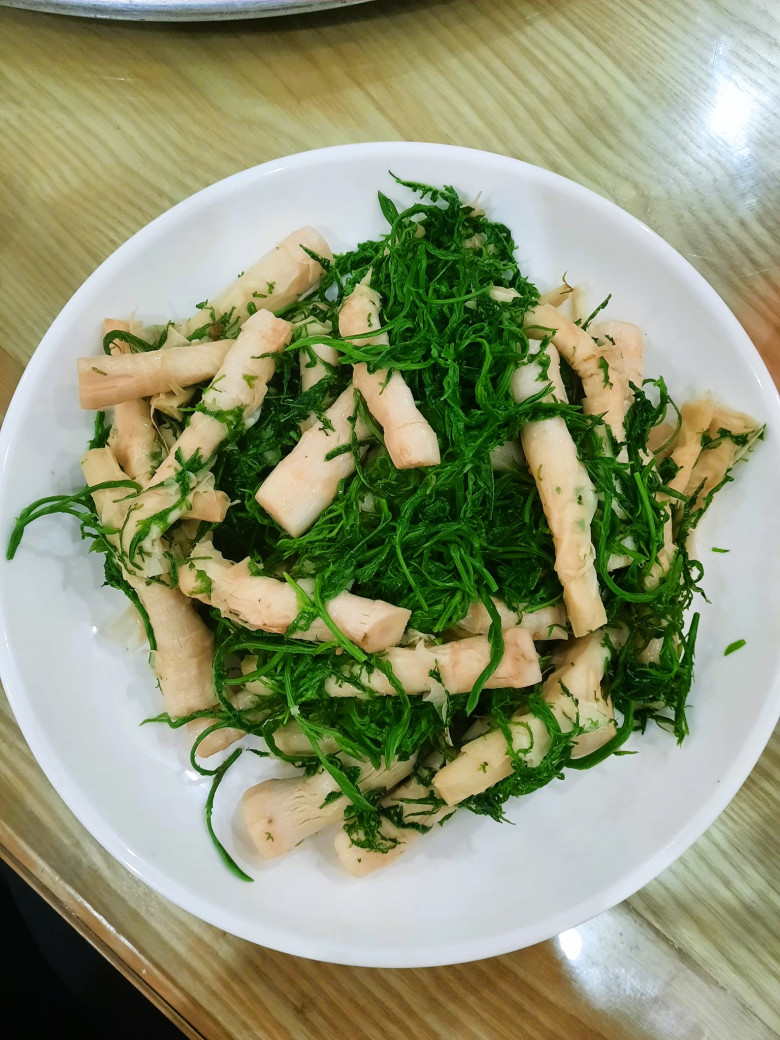
Beyond its initial scent, rau thối reveals a crisp, sweet taste when cooked, reflecting the Northwest’s culinary sophistication. Its culinary and medicinal value make it a source of regional pride and a must-try for those exploring Vietnam’s local specialties.







